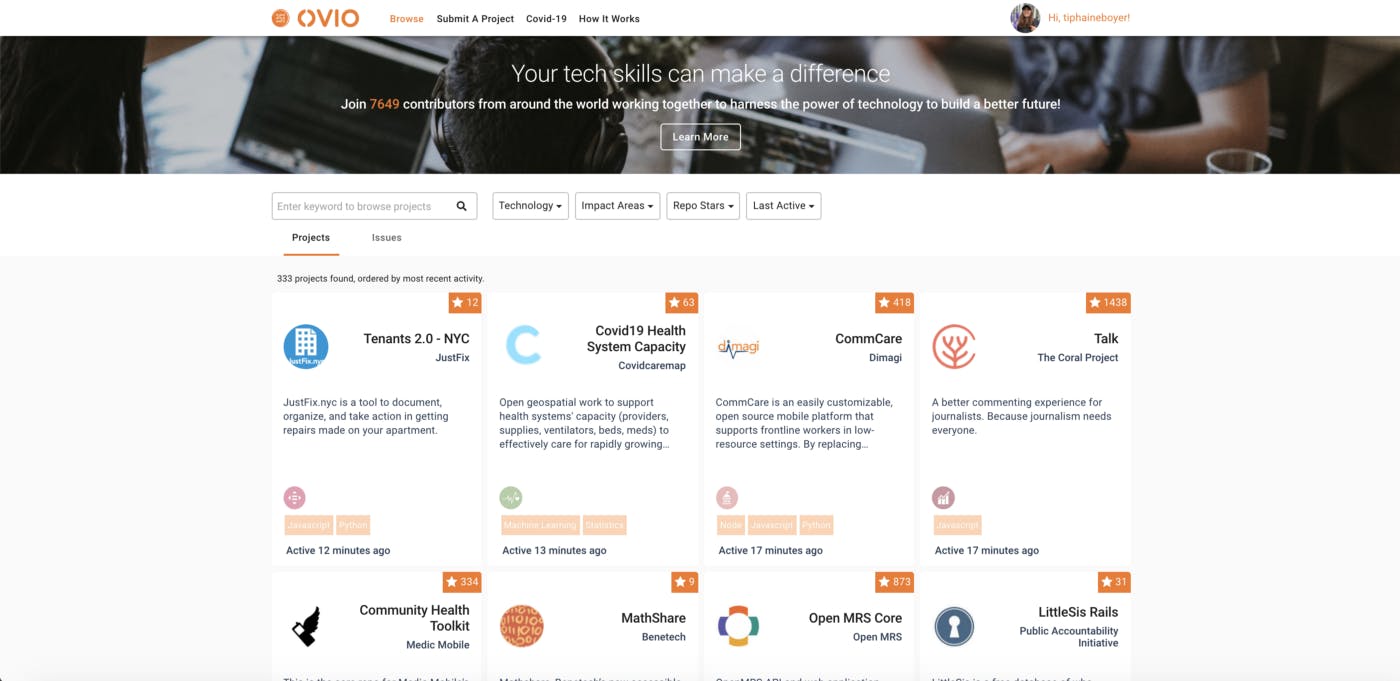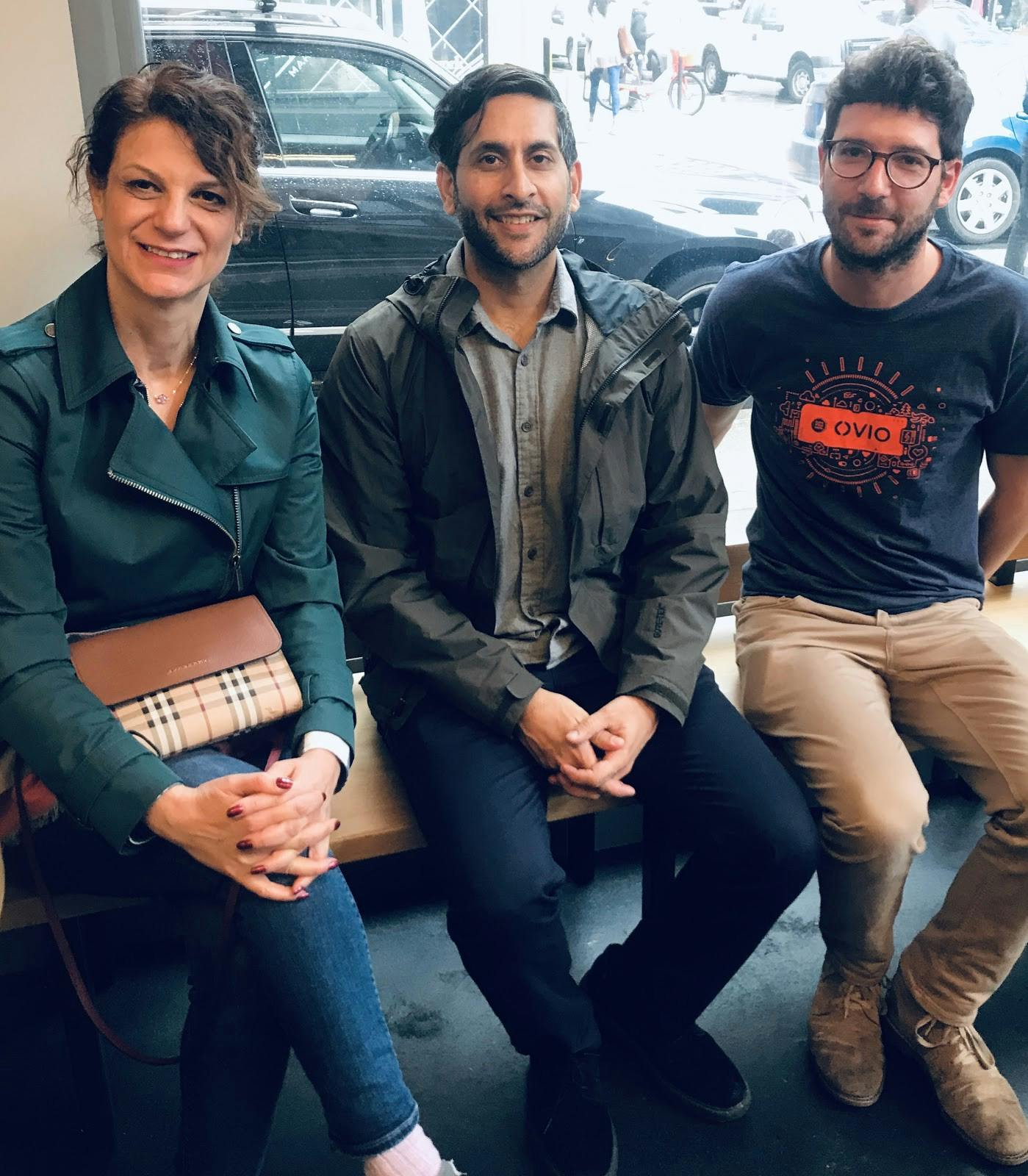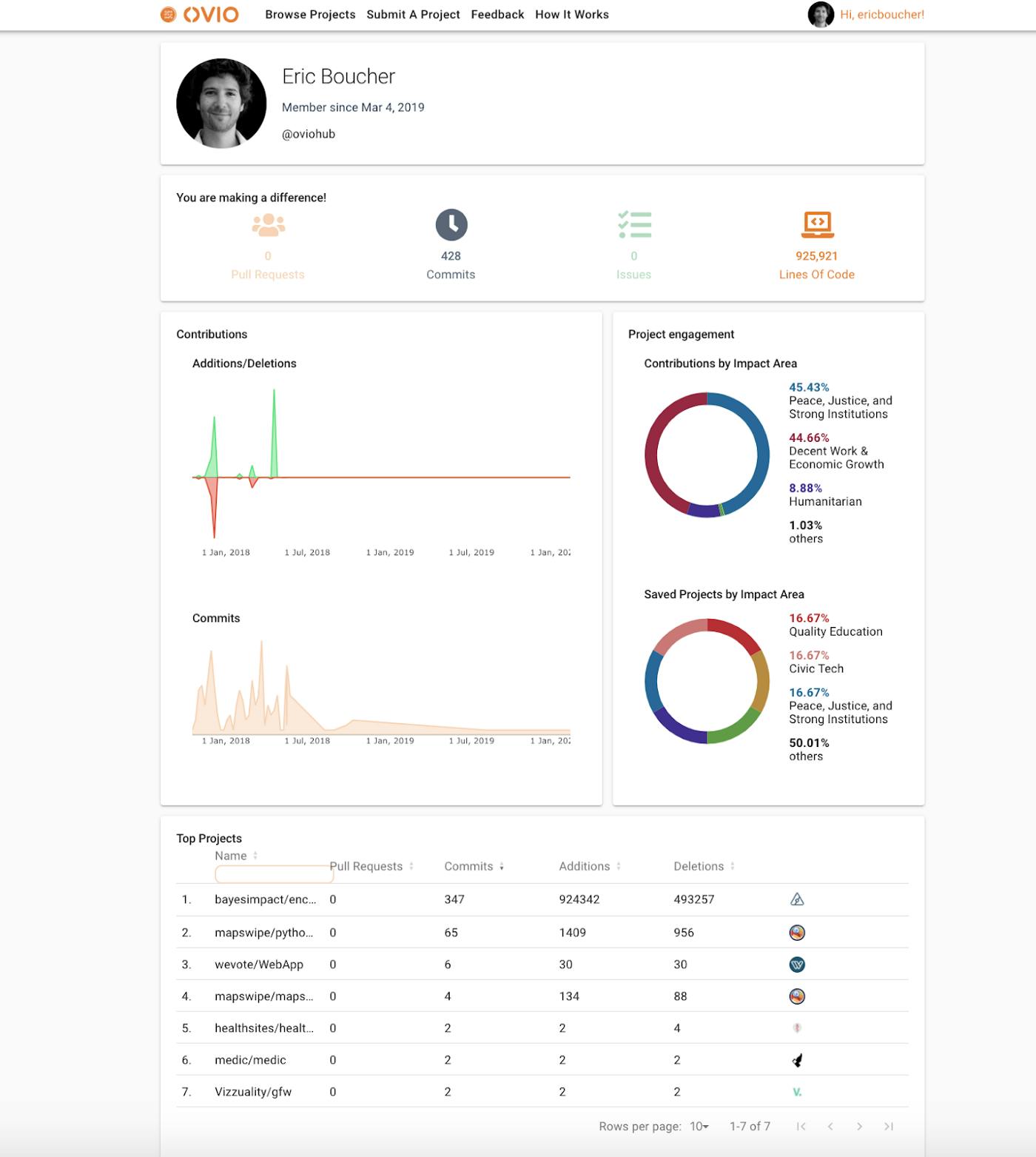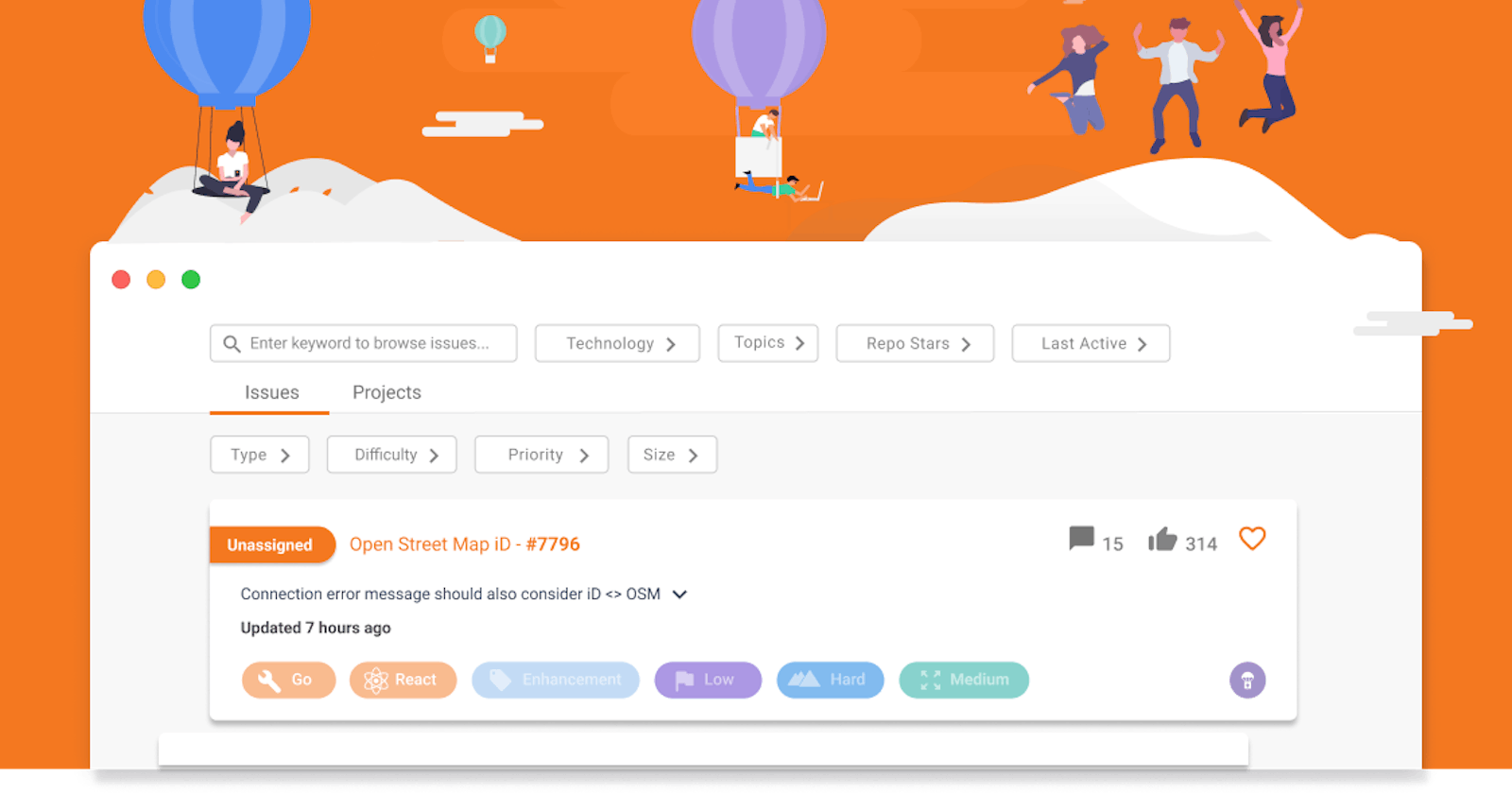Anyone should have the possibility to make a positive social impact if they want to. At Ovio, we empower developers to find the perfect open-source software project. We ensure that talented developers can use their most valuable skills to support the causes they care about and where they will have the most impact. Achieving the UN Sustainable Development Goals (SDGs) with technology is the core of our mission.
We believe that companies have also their part to play. Sharing technology, talent, and money could highly contribute to building a truly collaborative Tech For Good community. That is why we started working with Amazon Web Services (AWS) and their employees. To step up and see how — by giving the proper collaborative tools — an organization can contribute to Open-source software projects.
In this post, we’ll be highlighting four key elements that enable developers to engage their skills in digital volunteering opportunities:
- Discovering impactful open-source projects
- Matching developers and projects
- Transforming interest into real engagement
- Bringing out the power of open-source
You will discover the challenges and successes of our collaboration with AWS and its engineering team.

1. Discovering impactful open-source projects
Curating and vetting meaningful projects takes time and resources. That’s why we spent months looking for projects, organizations, and interesting initiatives. The power of open-source allowed us to quickly build a community of do-gooders and find a variety of technology solutions with important social and environmental impact.
WattTime , for example, creates technology solutions that make it easy for anyone to achieve emissions reductions without compromising cost, comfort, and function. They invented Automated Emissions Reduction (AER), a cutting-edge technology powered by algorithms and machine learning that can shift the timing of flexible electricity use to reduce emissions by synchronizing with times of cleaner energy generation and avoiding dirtier times.
Another example, the World Food Program PRISM project is a platform that combines remote sensing satellite data, government surveys, on-the-ground reports, and machine learning to create alerts, dashboards, and recommendations for countries dealing with environmental disasters. This actionable information enables policymakers to better prepare for and more efficiently respond to disasters and save countless people from displacement, loss of livelihood, or death.
2. Matching developers and projects
AWS employees have various passions, different interests, and very specific skills. We set out to create perfect project matches that cater to these individual differences, but we ran into a few difficulties that complicated the process. First, many individuals had fixed ideas of what their involvement in a new project would look like. Second, each project had urgent needs that were changing continuously. Creating a perfect match between skills, interests, and roles demands a strong understanding of both project owners’ expectations and developers’ volunteering capacities.
 Mojgan, volunteer from AWS — Amit, project manager at WFP — Eric, CEO at Ovio
Mojgan, volunteer from AWS — Amit, project manager at WFP — Eric, CEO at Ovio
We offered different options for developers. They could be contributors coding to solve issues on Github. Others would be mentors sharing tech recommendations on specific issues. Finally, a few became group leaders engaging their team on one or two projects.
Val, who’s a Cloud Infrastructure Architect at AWS, created team volunteering sessions. She organized Good Will Wednesday with her team. Every Wednesday, 5 to 20 volunteers would gather via video conference, solve tasks, provide advice, create an architecture diagram, and discuss challenges with the WattTime team. We also developed recommendations and useful tips for project owners to make their repos (a project on Github, a folder that holds code) more contributor friendly and their issues more informative. Establishing a tagging strategy and indicating priority needs are among the most important recommendations we provided. We also created project descriptions allowing volunteers to clearly see what impact they would have if they got involved.
I was looking for an opportunity to give back and join a community of folks willing to do the same while leveraging my experience. I was immediately excited about Ovio because it helped me find the right opportunity for me right away! They matched me with a project that aligns with my technical expertise, delivering values on things that I find important.
Tyler, a volunteer from AWS
3. Transforming interest into real engagement
We had to make projects exciting to get developers’ attention. Creating intelligent matching and describing the impact of each project worked as a strategy to get developers interested, but it was not enough to create sustainable contributions from them. We quickly discovered that developers needed feedback, rewards, or comments about the work they provided to move forward and continue contributing. They had to be able to measure their impact.

We then started working on reporting developers’ contributions. We created a dashboard, both for developers and their managers, where they could track engagement. This dashboard allows developers to evaluate their work and feel rewarded for their actions. They are able to share some key metrics with their colleagues, family, and friends. It also allowed AWS managers to measure their employees’ motivation levels as well as their company’s overall impact.
Our volunteer is super passionate and engaged with the project! We have added her to our Slack and integrated her into our engineering workflow, we also have a weekly sync, at her request, to answer questions she has.
Jack, a project manager at Replate
4. Bringing out the power of open-source
Thinking about a project in an open and collaborative way attracts outside contributions and accelerates technology development. Without a strong community of open source developers behind them, many organizations building software for important challenges lag behind the needs of users. By inviting the world to collaborate on a project, the open-source community invites people from all around the globe to not only help develop an impactful solution but also adapt and re-use it, wherever they are. Thanks to open-source, we were able to discover impactful and innovative projects (1), match developers to the right opportunities (2), and track their contributions (3). Open-source enabled us to create these meaningful matches and fulfill developers’ ambitions while empowering projects to develop faster.
When a crisis like COVID-19 strikes, open collaboration and digital volunteering strives. Indeed, during these challenging times, open-source revealed its power to help those fighting the pandemic by developing cross-border solutions. Github alone gathers more than 30,000 repositories related to the virus and the number keeps growing. For engineers, developers, designers, managers, and tech companies looking for ways to get involved, open-source is the most efficient way to do so. Our collection of COVID-19 projects will help you find out how!
Register with Ovio https://ovio.org/login and contribute now!

